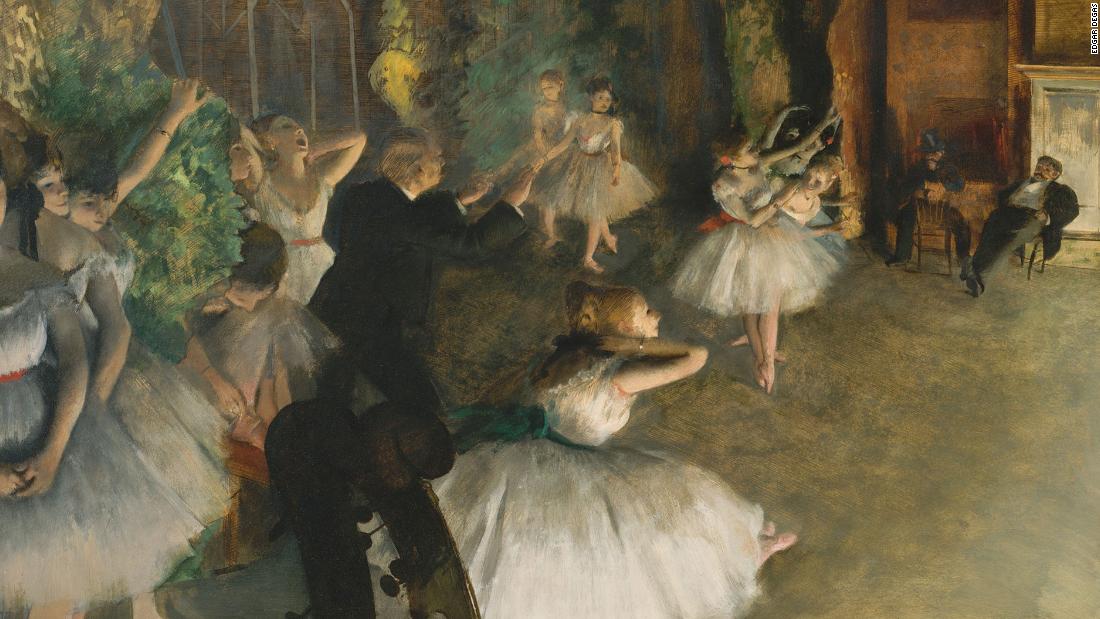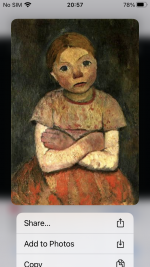stlukesguild
Well-known member
- Messages
- 2,854
I'm pulling this discussion to a new thread in order to not derail the thread on "Recent Art You Like".
I posted this lovely (IMO) painting by Jeremy Lipking:

Shortly thereafter, I got the following responses:
Looks like the photo it was painted from. Which makes one wonder. Why not just take a photo. In fact now photos can be altered to look more like a painting than this does.
Impressive skill, but where is the art.
... if you ask me, there isn't much art in most portraiture. It's craft.
Honestly, while Jeremy LIpking works from photographs as well as from life, the above painting does not look like a photograph to me nor I am able to tell whether it was painted from life or from a photograph. Considering that the painting is of the artist's daughter, Skylar, I suspect it was painted from life.
But then "there isn't much ART in portraiture?" Surely, that is an absolutely ridiculous statement. Is there an artistic genre that has resulted in more masterful works of Art than portraiture? Portraits rank among the finest works of art for longer than many other genres such as landscape or still life dating back to ancient times across cultures:


There are endless masterpieces of portraiture by the "old masters" across the ages:




Portraits remain a leading genre since the onset of Modernism in spite of the growth of the popularity of Landscape, Still Life, and Abstraction:



These examples barely scrape the surface of all the great portraits across the history of art. And then we have the issue of photographic portraits. Any time the question is raised of the "photoreal" nature of some paintings and whether such paintings lack true Art, this ignores the fact that photography is an art form and that there are any number of great photographic portraits in which those having studied the genre for some time can tell one photographer from another. In other words, not even photography can be seen as presenting some universal "realism" sans Art.
I personally lean toward an art in which the artifice is more obvious... where you can easily discern the artist's mark-making, distortions of shape and form and space, exagerrated colors, etc... but "realism"... an art of great illusion... also employs a great deal of artifice... although this may be more difficult to discern without a degree of experience. The paintings of Vermeer and Ingres often look "photo real"... at first. It is amazing how much abstraction exists in these paintings. This is something recognized by subsequent artists. The colors and areas of pixelated surfaces in Vermeer inspired the Impressionists. The artificial color, composition, and distortions of form and space in Ingres inspired Degas, Picasso, and even DeKooning... among other artists.
So where does the Art in a work of Art lie?
I posted this lovely (IMO) painting by Jeremy Lipking:
Shortly thereafter, I got the following responses:
Looks like the photo it was painted from. Which makes one wonder. Why not just take a photo. In fact now photos can be altered to look more like a painting than this does.
Impressive skill, but where is the art.
... if you ask me, there isn't much art in most portraiture. It's craft.
Honestly, while Jeremy LIpking works from photographs as well as from life, the above painting does not look like a photograph to me nor I am able to tell whether it was painted from life or from a photograph. Considering that the painting is of the artist's daughter, Skylar, I suspect it was painted from life.
But then "there isn't much ART in portraiture?" Surely, that is an absolutely ridiculous statement. Is there an artistic genre that has resulted in more masterful works of Art than portraiture? Portraits rank among the finest works of art for longer than many other genres such as landscape or still life dating back to ancient times across cultures:
There are endless masterpieces of portraiture by the "old masters" across the ages:
Portraits remain a leading genre since the onset of Modernism in spite of the growth of the popularity of Landscape, Still Life, and Abstraction:
These examples barely scrape the surface of all the great portraits across the history of art. And then we have the issue of photographic portraits. Any time the question is raised of the "photoreal" nature of some paintings and whether such paintings lack true Art, this ignores the fact that photography is an art form and that there are any number of great photographic portraits in which those having studied the genre for some time can tell one photographer from another. In other words, not even photography can be seen as presenting some universal "realism" sans Art.
I personally lean toward an art in which the artifice is more obvious... where you can easily discern the artist's mark-making, distortions of shape and form and space, exagerrated colors, etc... but "realism"... an art of great illusion... also employs a great deal of artifice... although this may be more difficult to discern without a degree of experience. The paintings of Vermeer and Ingres often look "photo real"... at first. It is amazing how much abstraction exists in these paintings. This is something recognized by subsequent artists. The colors and areas of pixelated surfaces in Vermeer inspired the Impressionists. The artificial color, composition, and distortions of form and space in Ingres inspired Degas, Picasso, and even DeKooning... among other artists.
So where does the Art in a work of Art lie?



